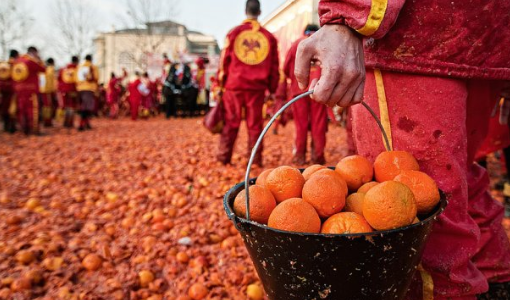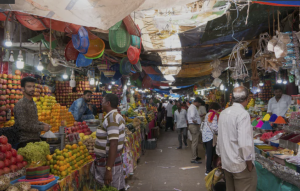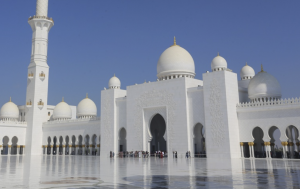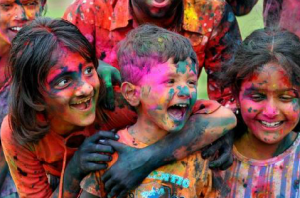Play with colors
The Holi Festival officially begins the next morning and people play with colors. Everyone holds dry pigments or balls containing colored solutions to throw and spray color at others.
Traditionally, these colors are blended from natural plants, so they can be easily removed like saffron, sandalwood and rose. Everyone rushed to the road to participate in this fun game. By the end of the morning, everyone looks like a colorful picture. And this is why the Holi festival is also known as the “Color Festival”.
People gathered in groups to sing and dance while the drums and dholak. Every time the “war” with colors was paused, everyone would eat gujiya, mathri, malpuas and many other traditional dishes. Bhang, a beverage made from local herbs, is also an integral part of the Holi festival.
Other variations of the festival
In the Braj region near Mathura, north of India, the festival can be extended for more than a week. Here, people not only have fun with colors but also have another special day, when men walk around with shields and women have the right to hit on their shields with a cane. In southern India, people worship and make offerings to Kaamadeva, the god of love in Indian mythology on festive occasions.

At the end of the festival
After a day of playing with colors, people take a shower to clean and wear new costumes to welcome friends and relatives to visit. Holi is also a festival of forgiveness and the beginning of a new beginning, with the aim of creating harmony in society, leaving behind all hatred. On this day, all hatred is left behind, all the young and old are mixed in the atmosphere of the festival.
The time
Holi Festival is celebrated on the full moon day in March every year. However, the festival is also held a day earlier in some areas of eastern India, like West Bengal.

The places
This sprawling festival is celebrated in almost every part of India. The festival is held the largest in Mathura, about 4 hours from Delhi.


